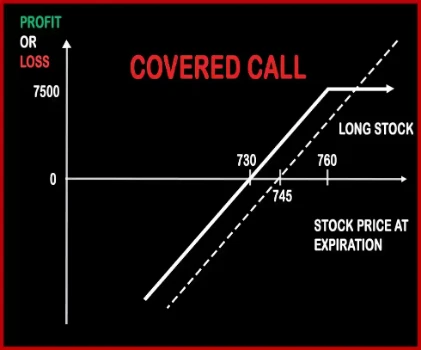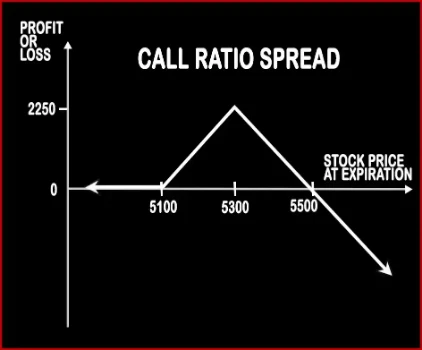Compare Strategies
| COVERED CALL | RATIO CALL SPREAD | |
|---|---|---|

|

|
|
| About Strategy |
Covered Call Option StrategyMr. X owns Reliance Shares and expects the price to rise in the near future. Mr. X is entitled to receive dividends for the shares he hold in cash market. Covered Call Strategy involves selling of OTM Call Option of the same underlying asset. The OTM Call Option Strike Price will generally be the price, where Mr. X will look to get out o |
Ratio Call Spread Option StrategyAs the name suggests, a ratio of 2:1 is followed i.e. buy 1 ITM Call and simultaneously sell OTM Calls double the number of ITM Calls (In this case 2). This strategy is used by trader who is neutral on the market and bearish on the volatility in the near future. Here profits will be capped up to the premium amount and risk will be potentially unlimited since he is .. |
COVERED CALL Vs RATIO CALL SPREAD - Details
| COVERED CALL | RATIO CALL SPREAD | |
|---|---|---|
| Market View | Bullish | Neutral |
| Type (CE/PE) | CE (Call Option) | CE (Call Option) |
| Number Of Positions | 2 | 3 |
| Strategy Level | Advance | Beginners |
| Reward Profile | Limited | Limited |
| Risk Profile | Unlimited | Unlimited |
| Breakeven Point | Purchase Price of Underlying- Premium Received | Upper Breakeven Point = Strike Price of Short Calls + (Points of Maximum Profit / Number of Uncovered Calls), Lower Breakeven Point = Strike Price of Long Call +/- Net Premium Paid or Received |
COVERED CALL Vs RATIO CALL SPREAD - When & How to use ?
| COVERED CALL | RATIO CALL SPREAD | |
|---|---|---|
| Market View | Bullish | Neutral |
| When to use? | An investor has a short term neutral view on the asset and for this reason holds the asset long and has a short position to generate income. | This strategy is used by trader who is neutral on the market and bearish on the volatility in the near future. Here profits will be capped up to the premium amount and risk will be potentially unlimited since he is selling two calls. |
| Action | (Buy Underlying) (Sell OTM Call Option) | Buy 1 ITM Call, Sell 2 OTM Calls |
| Breakeven Point | Purchase Price of Underlying- Premium Received | Upper Breakeven Point = Strike Price of Short Calls + (Points of Maximum Profit / Number of Uncovered Calls), Lower Breakeven Point = Strike Price of Long Call +/- Net Premium Paid or Received |
COVERED CALL Vs RATIO CALL SPREAD - Risk & Reward
| COVERED CALL | RATIO CALL SPREAD | |
|---|---|---|
| Maximum Profit Scenario | [Call Strike Price - Stock Price Paid] + Premium Received | Strike Price of Short Call - Strike Price of Long Call + Net Premium Received - Commissions Paid |
| Maximum Loss Scenario | Purchase Price of Underlying - Price of Underlying) + Premium Received | Price of Underlying - Strike Price of Short Calls - Max Profit + Commissions Paid |
| Risk | Unlimited | Unlimited |
| Reward | Limited | Limited |
COVERED CALL Vs RATIO CALL SPREAD - Strategy Pros & Cons
| COVERED CALL | RATIO CALL SPREAD | |
|---|---|---|
| Similar Strategies | Bull Call Spread | Variable Ratio Write |
| Disadvantage | • Unlimited risk, limited reward. • Inability to earn interest on the proceed used to buy the underlying stock. | • Unlimited potential loss. • Complex strategy with limited profit. |
| Advantages | • Profit from option premium, rise in the underlying stock and dividends on the stock. • Allows you to generate income from your holding. • Profit when underlying stock price rise, move sideways or marginal fall. | • Downside risk is almost zero. • Investors can book profit from share prices moving within given limits. • Trader can maximise profit when the share closes at the upper breakeven point. |